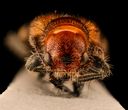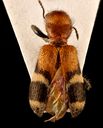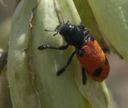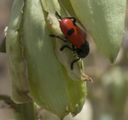Enoclerus
Enoclerus
Classification
- Phylum: Arthropoda
- Subphylum: Hexapoda
- Class: Insecta
- Order: Coleoptera
- Suborder: Polyphaga
- Superfamily: Cleroidea
- Family: Cleridae
- Subfamily: Clerinae
- Genus: Enoclerus
Pronunciation
How to pronounce Enoclerus: /ˌɛnoʊˈklɛrəs/
These audio files are automatically generated. While they are not always 100% accurate, they are a good starting point.
Images






Summary
Enoclerus is a genus of checkered beetles in the subfamily Clerinae, consisting of approximately 40 species in the area, with many more in Mesoamerica.
Physical Characteristics
Size ranges from 3 to 24 mm
Identification Tips
Check for predatory behavior and presence under bark or on woody plants
Habitat
Found under bark, in galls, and around woody plants; rarely observed on foliage
Distribution
North America and Mesoamerica
Diet
Larvae and adults are predacious; adults may also feed on pollen and are attracted to carrion and stored animal products
Ecosystem Role
Predators of chemically protected ladybird beetles
Tags
- checkered beetles
- Enoclerus
- Coleoptera
- Cleridae